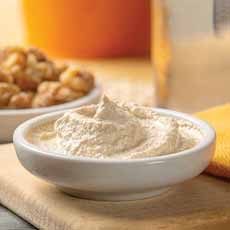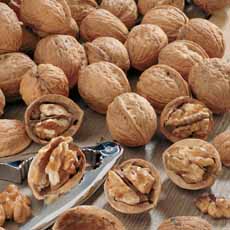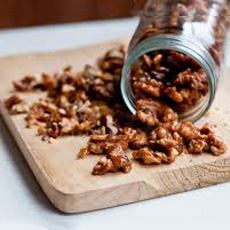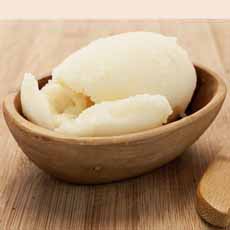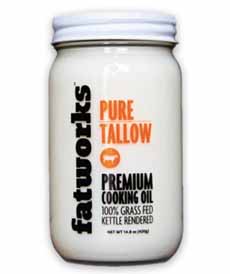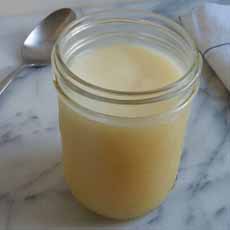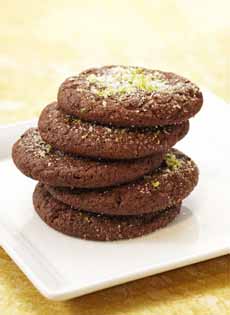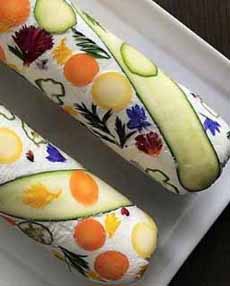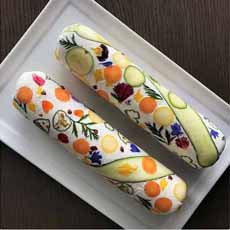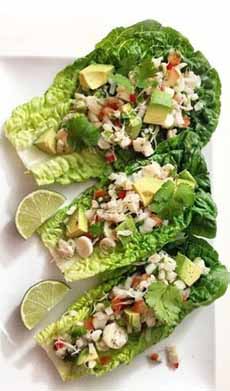
[1] Ceviche in lettuce cups (photo © The Chalk Board Magazine).
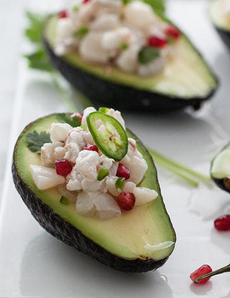
[2] Want something more substantial? Fill an avocado half: Here’s the recipe (photo © Avocados From Mexico).
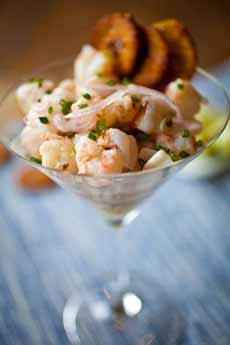
[3] Want something more elegant? Get out your Martini glasses (photo © Elegant Affairs Caterers).
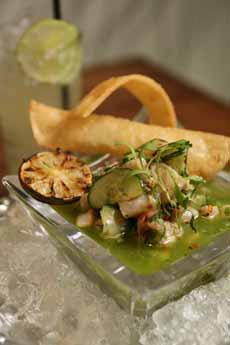
[4] Ceviche with a fried plantain garnish from Chef Todd English (photo © MXDC Cocina Restaurant | D.C.).
|
|
A light lunch or first course on a hot summer day…high in protein, low in calories and carbs…a fusion of a popular seafood dish and lettuce “cups…” It’s ceviche lettuce cups (photo #1).
Originally made as a “vegan ceviche” recipe from The Chalkboard Magazine, we adapted the concept to a mix of fresh fish and shellfish (the mix is up to you).
Freshwater or saltwater fish
Crustaceans: crab, lobster, shrimp
Mollusks: clams, mussels, octopus, oysters, scallops, squid
> The recipe for ceviche lettuce cups is below.
> Ceviche vs. tiradito.
> Why ceviche is good for you.
> What to drink with ceviche.
> More ceviche recipes.
WHAT IS CEVICHE?
Ceviche (pronounced say-VEE-chay, also spelled cebiche, seviche, and sebiche based on region—the Spanish pronounced a “v” as “b”) is a dish of fish and/or shellfish cured by acidic citrus juice—typically lime juice. It includes onions and other vegetables.
It has been popular in Latin America for many centuries: It’s one of the national dishes of Peru, and its roots go back for millennia.
In the early 1500s, the Spanish conquistadors wrote of an Inca dish of raw fish marinated in chicha, a fermented maize beer. That recipe dates back some 2,000 years.
Other curing methods used tumbo (Passiflora tarminina, a relative of passionfruit), or salt and fermented corn.
The concept evolved into ceviche: raw fish or shellfish cured with citrus juice. Over time, fruits were incorporated; most popularly, tomatoes (native to Peru) and mango.
A chemical process occurs when the fish/shellfish is marinated in the highly acidic citrus juice, which denatures the protein. The result is similar to what happens when the fish is cooked with heat. Instead of “cooking,” however, the fish is cured in the marinade, which adds its own delicious flavors.
Both Ecuador and Peru claim to have originated ceviche; both were part of the Incan Empire. But why quibble: Today, ceviche—or seviche or sebiche—is so popular that there are cevicherias, restaurants that specialize in ceviche.
The Spanish brought to Peru the limes, onions, and bell peppers that are integral to modern ceviche. In fact, the term “ceviche” is thought to come from the Spanish escabeche, meaning marinade. Others argue that the word comes from the Quechua (Incan) word siwichi [source].
Ceviche is found in almost all restaurants on the coast of Peru, typically served with camote (sweet potato, which originated in Peru). It has been called “the flagship dish of coastal cuisine,” and is one of the most popular dishes in Peru [source].
June 28th is National Ceviche Day.
TYPES OF RAW FISH DISHES
Ceviche is part of a group of refreshing raw or cured fish dishes, including:
Crudo, thinly-sliced raw fish, typically drizzled with olive oil (Italy). It is served at room temperature or slightly chilled. Carpaccio refers to raw fillet of beef, not fish.
Escabeche is not raw, but seared fish (or meat) that is then marinated. As with ceviche, it is always an acidic marinade, with herbs and spices. It is served chilled or at room temperature, like ceviche.
Poke, a raw fish salad, typically with cubed fish and raw vegetables (Hawaii). It is served at room temperature.
Sashimi, thicker than crudo, rectangular cuts of raw fish, typically served with soy sauce, wasabi and pickled ginger (Japan). It is served at room temperature.
Tartare, an adaptation of steak tartare, chopped and seasoned fish (France). It is served at room temperature.
Tataki is a fillet of fish that is lightly seared. Just the surface is cooked, with the interior of the fillet eaten in its raw state (Japan).
Tiradito, raw fish cut in a shape similar to crudo, in a spicy sauce (Peru—it reflects the influence of Japanese immigrants on Peruvian cuisine). It is served at room temperature or slightly chilled
Mix & Match
As with the other dishes, ceviche welcomes almost every type of fish and shellfish. You can also vary the:
Marinade
Garnishes
Presentation (photos #2 and #3)
> Here’s the master template for how to create your ideal ceviche recipe.
> Here are more ways to present ceviche.
|
